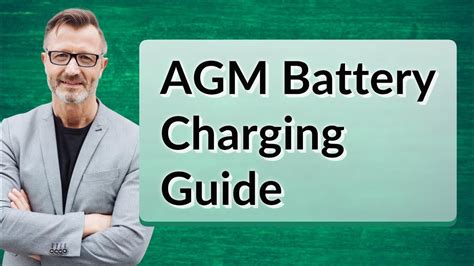Prevent AGM Battery Failure: A Charging Guide
Absorbent Glass Mat (AGM) batteries are known for their robust performance and durability, making them ideal for various applications, from motorcycles and ATVs to backup power systems and RVs. However, even these high-performance batteries can fail prematurely if not charged correctly. Understanding the nuances of AGM battery charging is crucial for maximizing their lifespan and preventing costly replacements. This comprehensive guide will walk you through the essential aspects of properly charging your AGM battery, helping you avoid common pitfalls and extend its operational life.
What Makes AGM Batteries Different?
Before diving into charging specifics, it's important to understand what sets AGM batteries apart. Unlike flooded lead-acid batteries, AGM batteries use a special fiberglass mat to absorb the electrolyte, preventing spillage and enabling operation in various orientations. This design also contributes to their superior vibration resistance and longer lifespan. However, this unique construction also means they require a slightly different charging approach.
Understanding AGM Battery Charging Basics
The key to preventing AGM battery failure lies in understanding the charging process. Overcharging or undercharging can severely damage the battery's internal components, leading to premature failure. Here are the fundamental principles:
-
Voltage Regulation: AGM batteries require a precise voltage regulation system. Over-voltage can lead to excessive gassing and water loss, shortening the battery's life and potentially causing damage. Under-voltage, on the other hand, prevents the battery from reaching full charge, limiting its capacity and performance.
-
Charging Current: The charging current should be carefully controlled. Too high a current can generate excessive heat, leading to battery damage and reduced lifespan. A lower charging current is generally preferred, especially during the bulk charging phase.
-
Charging Stages: A proper AGM battery charger typically operates in three stages: Bulk Charging, Absorption Charging, and Float Charging. Each stage plays a crucial role in achieving a full and safe charge.
H2: What are the three stages of AGM battery charging?
This is a crucial question many people ask. Let's break down each stage:
-
Bulk Charging: This initial stage rapidly charges the battery to approximately 80% capacity. The charger provides a relatively high current at a constant voltage.
-
Absorption Charging: Once the battery reaches 80%, the charger switches to a constant-voltage, lower-current mode. This stage completes the charging process, ensuring the battery achieves its full capacity. It's crucial to allow sufficient time for this stage; rushing it can negatively impact the battery's health.
-
Float Charging: Once the battery is fully charged, the charger enters the float charging stage. This maintains a constant voltage slightly below the battery's fully charged voltage, preventing self-discharge and ensuring the battery remains fully charged over an extended period.
H2: What is the ideal charging voltage for AGM batteries?
The ideal charging voltage for AGM batteries is generally around 14.4-14.7 volts for a 12V battery. However, this can vary slightly depending on the specific battery's specifications and ambient temperature. Always consult your battery's manufacturer's recommendations for precise voltage settings.
H2: How long does it take to charge an AGM battery?
The charging time varies depending on the battery's capacity and the charging current. A smaller battery with a higher charging current will charge faster than a larger battery with a lower charging current. However, it’s important to complete all three stages (bulk, absorption, and float) for optimal results. Expect several hours for a complete charge.
H2: Can I use a standard car battery charger on an AGM battery?
While some standard car battery chargers might work, it's generally not recommended. Standard chargers often lack the precise voltage regulation and multiple charging stages necessary for optimal AGM battery charging. Using an unsuitable charger increases the risk of overcharging and damaging the battery. Investing in a dedicated AGM charger is a far safer and more effective approach.
Avoiding Common AGM Battery Charging Mistakes
Several common mistakes can lead to AGM battery failure. Avoid these pitfalls:
-
Overcharging: This is perhaps the most common cause of AGM battery failure. Overcharging generates excessive heat and gassing, leading to water loss and damage to the battery plates.
-
Undercharging: Consistently undercharging the battery prevents it from reaching its full capacity, reducing its performance and lifespan.
-
Using the wrong charger: Using a charger not designed for AGM batteries can lead to overcharging, heat damage, and premature failure.
-
Ignoring temperature: Extreme temperatures can affect battery performance and charging efficiency. Consider adjusting the charging voltage based on ambient temperature, always following the manufacturer's guidelines.
-
Neglecting maintenance: Regularly checking the battery's voltage and ensuring proper ventilation can help prevent issues.
Conclusion
Proper charging is paramount to the longevity and performance of your AGM battery. By understanding the intricacies of the charging process, employing the correct charger, and avoiding common mistakes, you can significantly extend your battery's lifespan and maximize its value. Always consult your battery's manufacturer's specifications for detailed charging recommendations and never hesitate to seek expert advice if you are unsure about any aspect of the charging process. Investing in a quality AGM charger is an investment in the long-term health and performance of your valuable battery.

